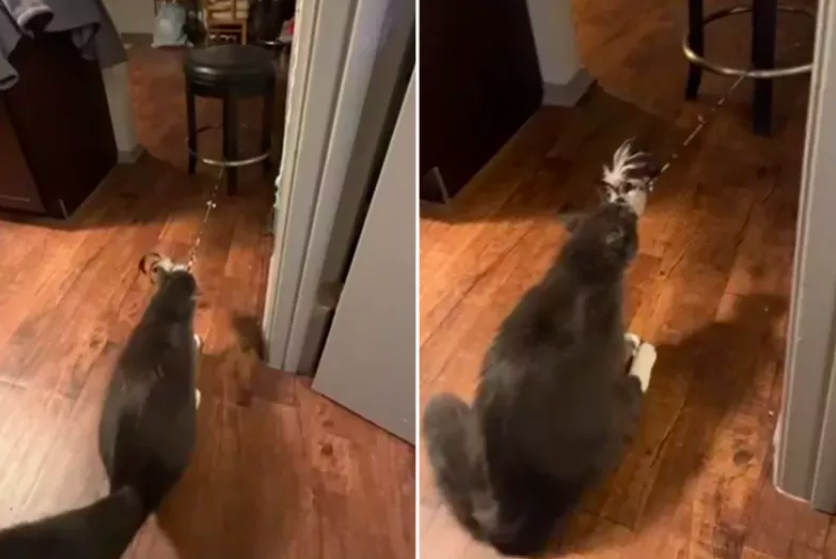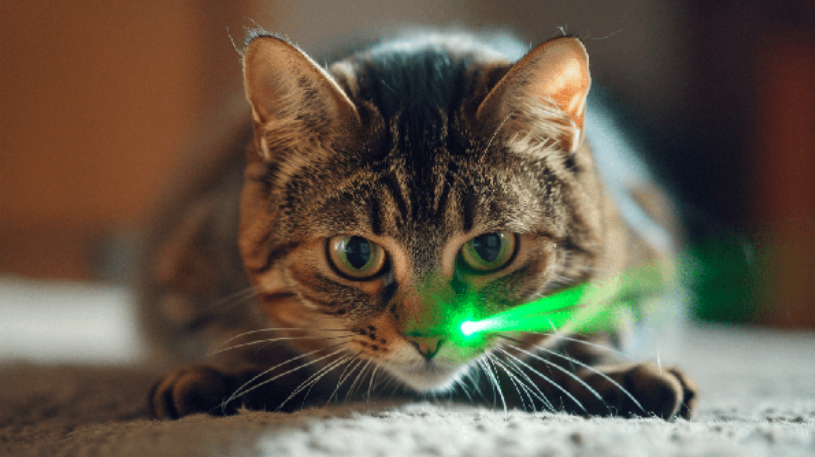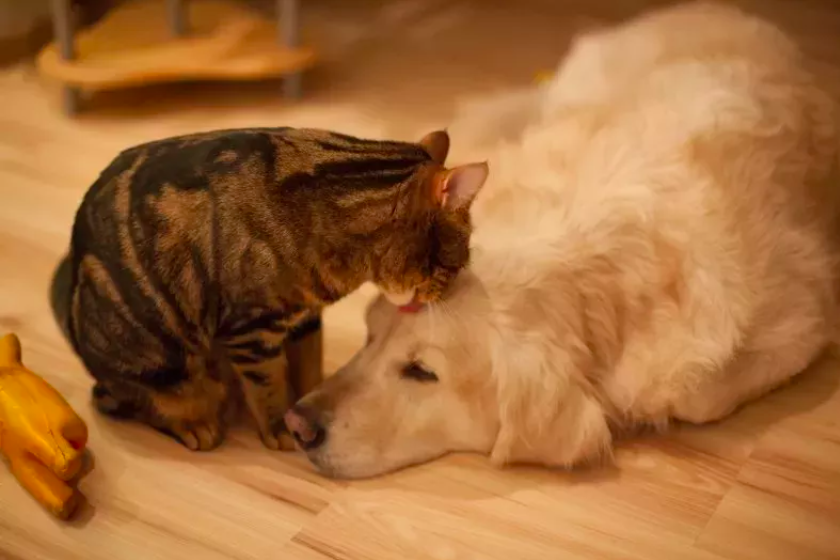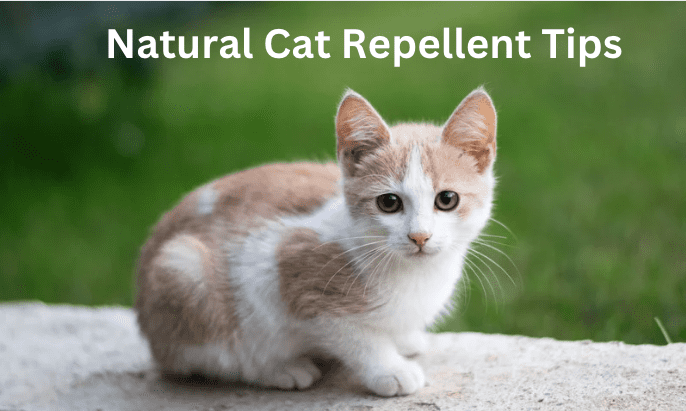Cats
American Wirehair: All You Need To Know About This cat Breed!

American Wirehair: All You Need To Know About This Cat Breed!
The American wirehair cat is a playful, affectionate, and independent breed with a coarse, crimped coat that is suitable for indoor or outdoor living. American Wirehair is a type of hair that originates in the United States.
American Wirehair
The American wirehair cat is a breed that originated in New York and is distinguished by its wiry, crimped coat, which is the result of a natural genetic mutation. These cats make wonderful companion animals because they are loving, easygoing, and affectionate.
The independence of these kitties, which is characteristic of true New Yorkers, makes them an excellent match for owners who lead hectic lives. Even though they are a relatively well-known cat breed, American wirehairs are a relatively uncommon cat breed.
Depending on their pedigree, these cats can be purchased from a breeder for between $800 and $1200. If you want and are looking for a new family pet, you need to know everything about American wirehair cats and kittens.
If you are looking for a new family pet or want to learn more about this breed, look no further.
Appearance
Even though their namesake is an English cat, American wirehair cats have coarse, thick hair that is rough to the touch and appears wiry.

Generally speaking, they have medium-sized, muscular bodies that are round and thick in shape, and they weigh an average of 8 and 12 pounds.
In this cat breed, the hair on her body and ears is bent or waved in a crimped pattern; some cats even have curly whiskers as well! American wirehairs are short-haired cats that can be solid black, blue, white, red, or cream.
Chinchilla (a silvery-white color), smoke, cameo, calico, tabby, and bicolor are some coat patterns available for these cats. They have large eyes that are slightly elevated at the outer corners and tilt slightly upward at the inner corners.
The eyes of American wirehairs can be blue, green, or gold in color. In part, this is due to the crimped texture of American wirehairs, which helps to keep loose hairs close to their bodies, making them hypoallergenic cats.
And while they are not completely allergen-free (no cat is! ), their coat helps keep shed hairs to a minimum and can be slightly less irritating to some allergy sufferers due to the way they groom themselves.
Before bringing an American wirehair kitten into your home, spend some time with the breed and observe how your allergies react to the kitten.
The American wirehair is frequently compared to the American shorthair in appearance and behavior. And while they do share many characteristics, the main difference between them is the texture of their hair; the American shorthair does not have the coarse, curly coat of the wirehair.
Temperament
American wirehairs are the perfect companion dog breed with their loving and laid-back attitude. This easygoing cat gets along with everyone, including dogs, other cats, children, and senior citizens.
There is so much love for this affectionate breed, and it is likely to develop strong attachments to every family member. Wirehairs are intelligent, playful, and self-sufficient. They’re active and affectionate,
but they’re not overly demanding or hyper. Even though these well-behaved cats enjoy interactive play with their humans, they are perfectly content to spend their spare time playing alone with toys.
When they aren’t playing, they enjoy curling up next to their humans and providing comforting cuddles and purrs as they sleep. These cats make very wonderful family pets because they are sweet, gentle, and friendly.
Necessities of Daily Life
American wirehairs are relatively low maintenance when it comes to being a pet cat. Because of their independent nature, your wirehair will be fine if you leave them alone for a short period without becoming lonely or worried.
And those who are frequently out of the house are a good match for this laid-back breed—but you must still provide her with plenty of love and affection when you are at home with her. Cats who are calm and patient don’t make a lot of noise and prefer to communicate their needs through other means.
You will have to pay keen or close attention to your wirehair’s body language and demeanor because she won’t always express herself verbally about her wants and preferences.
On the plus side, American wirehairs make excellent apartment pets because their loud meowing is unlikely to cause disturbance to the rest of the building. American wirehairs are much more than polite roommates; they are also incredibly loving and friendly to other pets and people.
Almost everyone in the family, including visiting guests, will get along with them, and they’ll especially enjoy cuddling with children (as long as the children are gentle with cats, of course!).
These cats are true mousers who enjoy the thrill of the chase. Rodents and insects in their immediate vicinity will not stand a chance. If they don’t have enough prey to stalk through the halls of their house, you’ll most likely find them sitting in a window seat watching birds.
American wirehairs will appreciate the interactive toys that have been left out for them to use to improve their natural hunting skills.
“They will play with toys, but they also enjoy self-play, which makes them an excellent companion for [pet] parents who live alone,” says Natalie L. Marks, DVM, CVJ, a Royal Canin veterinarian partner and Royal Canin veterinarian partner.
Care
Grooming your American wirehair cat is surprisingly simple, especially considering their coat’s thick and textured. Regularly brushing their unique coat can be detrimental, so it’s best to limit brushing and only do it when necessary, such as during periods of heavy shedding.
Bathing your American wirehair regularly can help rid her of dead hair and keep her coat from becoming greasy. She’ll also require regular nail, ear, and dental care, among other things.
Regular bursts of energetic play are interspersed with long periods of sleep for the American wirehair, which follows the same exercise regimen as most other cat breeds. Toys, cat trees, and one-on-one play will all help to keep your cat active and entertained.
This intelligent cat breed is simple to train and has a strong desire to learn. In most cases, training them to use scratching posts and litter boxes will be a straightforward process.
American wirehairs benefit from early socialization because they feel more at ease and secure. This cat will be friendly and playful with almost anyone she encounters if she has been properly socialized with friendly people and other animals.
You should feed your American wirehair a diet of high-quality cat food that your veterinarian has recommended. Marks recommends that they follow a healthy, consistent diet and exercise regimen to keep them from becoming overweight.
Health
A typical American wirehair cat has a life expectancy of 10–16 years and is a generally healthy pet. The most serious health risks associated with the American wirehair are hypertrophic cardiomyopathy (HCM) and hip dysplasia.
Reputable breeders will screen for health issues in your kitten, but it’s important to continue to have them screened for health issues as they grow older. HCM and other health problems in cats can go undetected for long periods, even when they are serious.
History
According to the Cat Fanciers ‘ Association, a wirehair cat was born in upstate New York in 1966, and it was the first recorded American wirehair.
A spontaneous mutation occurred in a litter of farm kittens, resulting in the birth of one cat with the breed’s distinctive kinky, crimped coat, which became known as the “Kinky Cat.”
The kitten in question was then carefully bred, resulting in the original mutation being preserved. Genetic mutations are not uncommon and can be found worldwide, but this particular mutation has not yet been found in another country, even though they are not entirely uncommon.
Given that they are a relatively new breed, the American wirehair is still being refined through breeding, and they are still considered rare in the modern era. The American shorthair is frequently used as a comparison for this breed.
Even though they have distinct differences in coat and some facial characteristics, the American shorthair cat is still occasionally used in wirehair breeding programs.
Features Of American Wirehair
- Height: 9–11 Inches
- Weight: 8–12 POUNDS
- Lifespan: 10–16 years of age
- Good with: Children, Seniors, Families, dogs, and cats
- Temperament: Sociable, Affectionate, and Courageous
- Intelligence: High
- Shedding Amount: Normal.
- Activity Level: Calm
- Playfulness: Medium
- Vocalness: Infrequent
- Coat Length: Short
- Colors: Bright, Ebony red, White, Black, Orange blue, Gray lavender, Silver cream, Beige, Tan fawn, Silver cream, Orange blue, Gray lavender, Silver cream
- Pattern: Tabby calico / tri-color color point / solid bi-color tabby calico
- Other Characteristics: Trainable and groomable with a human-friendly disposition
pet-friendly toward other animals, pet-friendly toward strangers
tolerates being alone, has a strong prey drive, and has the potential to gain weight.
especially suitable for first-time pet owners
When picked up, good to be on the lap, the cat is not bothered when picked up.
We appreciate you for taking the time to read!
Finally, we hope you found this article interesting? And what do you think about ”American Wirehair: All You Need To Know About This Cat Breed!?”
Please you should feel free to share your thoughts with us in the box below.
And let us know if you observe something that isn’t quite right.
Cats
Clever Cats: Breeds That Learn Fast

Clever Cats: Breeds That Learn Fast
Cats have always fascinated us with their agility, independence, and sometimes enigmatic behavior. Among the vast array of feline breeds, some stand out for their remarkable intelligence and ability to learn quickly.
In this article, we will delve into the world of these exceptional cat breeds, exploring their unique characteristics, training capabilities, and what makes them such quick learners.
Whether you’re a seasoned cat owner or considering adopting a new feline friend, this comprehensive guide will help you understand the breeds that are not only intelligent but also a joy to train.
Why Intelligence Matters in Cats
Understanding Feline Intelligence
Feline intelligence is a multi-faceted trait that encompasses problem-solving abilities, social learning, and adaptability. Unlike dogs, cats often showcase their intelligence in more subtle ways, such as manipulating objects to get what they want or learning routines and commands.
Benefits of Owning Intelligent Cats
Owning an intelligent cat comes with several benefits. These cats are more interactive and engaging, making them excellent companions. They can learn tricks, follow commands, and even understand basic household rules, which makes living with them more enjoyable and less challenging.
Top Cat Breeds Known for Their Intelligence
Abyssinian
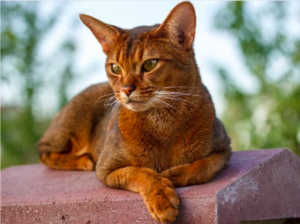
Overview
The Abyssinian is often hailed as one of the smartest cat breeds. Known for their curiosity and playful nature, Abyssinians are quick learners who thrive on mental stimulation.
Training and Activities
Abyssinians are highly trainable and enjoy interactive toys and puzzle feeders. They can learn tricks such as fetching and even walking on a leash. Their love for heights means they appreciate cat trees and climbing structures.
Siamese
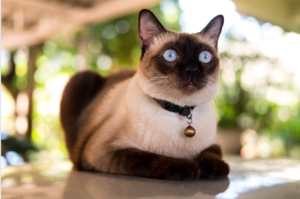
Overview
Siamese cats are not only intelligent but also highly vocal and sociable. They form strong bonds with their owners and are always eager to engage in activities.
Training and Activities
Siamese cats are quick to learn tricks and commands. They enjoy interactive play and can be trained to perform simple tasks like opening doors or retrieving items. Their vocal nature also makes them responsive to verbal cues.
Bengal
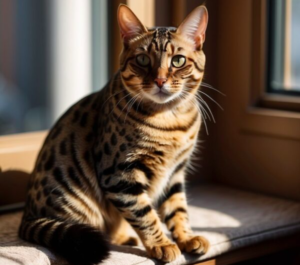
Overview
Bengals are known for their striking appearance and high energy levels. Their intelligence is reflected in their ability to solve problems and learn complex tasks.
Training and Activities
Bengals enjoy activities that challenge their minds, such as agility courses and puzzle toys. They can be trained to walk on a leash and perform tricks. Providing them with interactive playtime helps in channeling their energy positively.
Burmese
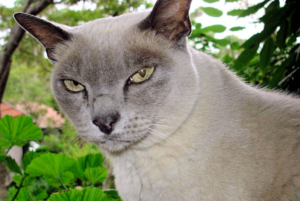
Overview
Burmese cats are affectionate, people-oriented, and intelligent. They enjoy being involved in family activities and can be trained to follow various commands.
Training and Activities
Burmese cats are quick learners and respond well to positive reinforcement. They enjoy learning tricks, playing fetch, and interactive games that stimulate their minds.
Scottish Fold
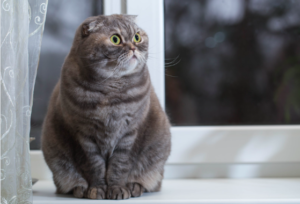
Overview
Scottish Folds are known for their distinctive folded ears and sweet demeanor. Despite their calm appearance, they are intelligent and can learn quickly.
Training and Activities
Scottish Folds enjoy interactive toys and games. They can learn tricks and commands and appreciate routines that keep their minds engaged.
Training Tips for Intelligent Cats
Start Early
Begin training your cat as early as possible. Kittens are more receptive to learning new behaviors and routines.
Use Positive Reinforcement
Reward your cat with treats, praise, or playtime whenever they successfully perform a desired behavior. Positive reinforcement strengthens the association between the action and the reward.
Keep Sessions Short and Fun
Cats have shorter attention spans than dogs, so keep training sessions brief and enjoyable. Incorporate playtime to make learning fun for your cat.
Be Patient and Consistent
Patience and consistency are key when training cats. Repeat commands and routines regularly, and avoid punishing your cat for mistakes. Consistency helps reinforce learning and builds trust.
Challenges of Training Intelligent Cats
Independence and Stubbornness
Intelligent cats can sometimes be independent and stubborn. They might choose to ignore commands if they are not in the mood, so it’s important to understand their behavior and work with it.
Need for Mental Stimulation
Highly intelligent cats require constant mental stimulation. Boredom can lead to behavioral issues, so ensure they have plenty of toys, activities, and interaction to keep their minds engaged.
Managing High Energy Levels
Breeds like Bengals have high energy levels that need to be managed. Providing them with enough physical and mental exercise is crucial to prevent destructive behavior.
Living with Intelligent Cats
Creating an Enriched Environment
An enriched environment is essential for intelligent cats. This includes a variety of toys, climbing structures, scratching posts, and interactive feeders to keep them stimulated.
Social Interaction
Intelligent cats thrive on social interaction. Spend quality time playing, training, and simply bonding with your cat to ensure they feel valued and engaged.
Understanding Their Needs
Each intelligent breed has its own unique needs and preferences. Understanding these and catering to them will help you build a strong and positive relationship with your cat.
Conclusion
Owning an intelligent cat can be an incredibly rewarding experience. These quick learners bring joy, challenge, and companionship to their owners. By understanding their unique characteristics and providing the right environment and training, you can foster a deep and fulfilling relationship with your feline friend.
Whether you choose an Abyssinian, Siamese, Bengal, Burmese, or Scottish Fold, you’re sure to enjoy the remarkable intelligence and personality they bring into your home.
Frequently Asked Questions (FAQs)
What makes a cat breed intelligent?
Intelligent cat breeds often show high levels of problem-solving abilities, adaptability, and social learning. They can quickly learn commands, tricks, and routines.
Can all cats be trained?
While some breeds are more receptive to training than others, all cats can be trained to some extent. Patience, consistency, and positive reinforcement are key to successful training.
What are the best toys for intelligent cats?
Interactive toys, puzzle feeders, and climbing structures are ideal for intelligent cats. These toys provide mental stimulation and keep them engaged.
How do I keep my intelligent cat from getting bored?
Provide a variety of toys, engage in regular playtime, and introduce new activities regularly. Rotating toys and creating an enriched environment also help prevent boredom.
Are intelligent cats more difficult to care for?
Intelligent cats can be more demanding in terms of mental stimulation and interaction. However, with the right approach and environment, they can be delightful companions.
We appreciate you for taking the time to read this article!
Finally, we hope you found this article interesting? And what do you think about ”Clever Cats: Breeds That Learn Fast!?”
Please feel free to share or inform your friends about this article and this site, thanks!
And let us know if you observe something that isn’t quite right.
Cats
The Enchanting Scottish Fold: A Guide to the Adorable Feline with Folded Ears
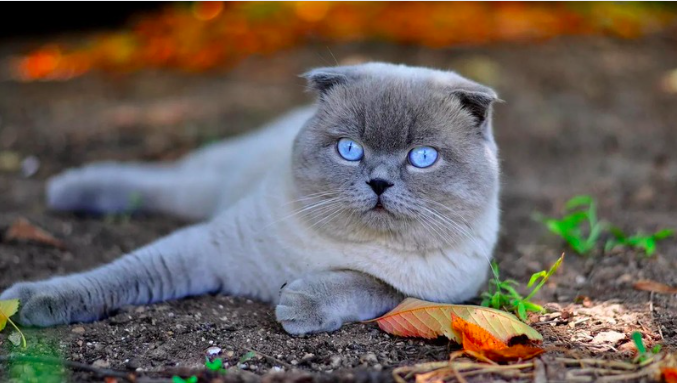
The Enchanting Scottish Fold: A Guide to the Adorable Feline with Folded Ears
Welcome to the world of the Scottish Fold cat, where charm and curiosity meet in an irresistibly adorable package. With their distinctive folded ears and sweet expression, Scottish Folds have captured the hearts of cat lovers around the world. Originally hailing from Scotland, these cats are known for their gentle demeanor, playful nature, and loving personality.
In this comprehensive guide, we will delve into the fascinating world of Scottish Fold cats, exploring their history, physical characteristics, personality traits, and care requirements. Whether you’re a seasoned cat owner or considering adding a feline friend to your family, the Scottish Fold’s unique charm and affectionate nature make them a delightful addition to any home. Join us as we unravel the enchanting tale of the Scottish Fold cat and discover why they are such beloved companions.
Fold
Overview
The Scottish Fold cat is a charming and distinctive breed known for its unique folded ears and sweet expression. Originating from Scotland in the 1960s, these cats have captured the hearts of many with their endearing appearance and affectionate nature. Scottish Folds are known for their gentle and loving temperament, making them wonderful companions for families and individuals alike.
History and Origins
The Scottish Fold breed traces its roots back to a white barn cat named Susie, who was found in Scotland in the early 1960s. Susie had a unique genetic mutation that caused her ears to fold forward, giving her an owl-like appearance. This trait was passed down to her kittens, and thus, the Scottish Fold breed was born. The breed quickly gained popularity for its distinctive look and friendly demeanor, and it was officially recognized by cat registries in the 1970s.
Physical Characteristics
- Folded Ears: The most distinctive feature of the Scottish Fold is its folded ears, which give the cat a sweet and owl-like appearance. Not all Scottish Folds have folded ears; some may have straight ears, known as “straights,” which are also common in the breed.
- Coat and Colors: Scottish Folds can have either a short or long coat, both of which are dense and plush. They come in a variety of colors and patterns, including tabby, tortoiseshell, and solid colors like white, black, and blue.
- Body Structure: Scottish Folds are medium-sized cats with a rounded appearance. They have sturdy bodies, round faces, and large, expressive eyes that give them a sweet and gentle expression.
Personality and Behavior
Scottish Folds are known for their calm and laid-back demeanor. They are affectionate cats that enjoy being around people and are often described as “lap cats” due to their love of cuddling. They are also known for their playful nature and enjoy interactive toys and games. Scottish Folds are generally good with children and other pets, making them a great choice for families.

Health and Care
- Ear Care: Due to their folded ears, Scottish Folds may be prone to ear infections. It’s important to regularly check and clean their ears to prevent issues.
- Grooming: Scottish Folds have dense coats that require regular grooming to prevent matting and tangling. Weekly brushing is usually sufficient to keep their coat in good condition.
- Health Concerns: Scottish Folds are generally healthy, but they may be prone to certain genetic conditions, including a skeletal disorder known as osteochondrodysplasia. Responsible breeding practices can help minimize the risk of these health issues.
Training and Activities
Scottish Folds are intelligent cats that can be trained to perform tricks and commands. They enjoy interactive play and benefit from toys that stimulate their minds and bodies. Providing them with scratching posts and other outlets for their natural behaviors can help keep them happy and healthy.
Compatibility with Families and Other Pets
Scottish Folds are known for their gentle and affectionate nature, making them great companions for families. They are good with children and other pets, including dogs, and can adapt well to different environments. Their loving and sociable nature makes them a popular choice for households looking for a friendly and affectionate pet.
Conclusion
The Scottish Fold cat is a unique and charming breed known for its folded ears and sweet expression. With their gentle demeanor and affectionate nature, Scottish Folds make wonderful companions for families and individuals alike. Whether you’re looking for a lap cat to cuddle with or a playful friend to keep you entertained, the Scottish Fold cat is sure to bring joy and companionship to your home.
FAQs about Scottish Fold Cats
Why do Scottish Folds have folded ears?
Scottish Folds have a genetic mutation that affects the cartilage in their ears, causing them to fold forward. This unique trait gives them their distinctive appearance.
Are Scottish Folds prone to ear problems due to their folded ears?
Yes, Scottish Folds may be more prone to ear infections due to the fold in their ears, which can trap dirt and moisture. Regular cleaning and monitoring of their ears can help prevent issues.
Do Scottish Folds have any health issues associated with their folded ears?
Scottish Folds may be prone to a condition called osteochondrodysplasia, which affects the development of their cartilage and bones. Responsible breeding practices can help reduce the risk of this condition.
Are Scottish Folds good with children and other pets?
Scottish Folds are known for their gentle and friendly nature, making them good companions for families with children and other pets. They enjoy socializing and being part of the family.
Do Scottish Folds require a lot of grooming?
Scottish Folds have dense coats that require regular grooming to prevent matting and tangles. Weekly brushing is recommended to keep their coat in good condition.
We appreciate you for taking the time to read this article!
Finally, we hope you found this article interesting? And what do you think about ”The Enchanting Scottish Fold: A Guide to the Adorable Feline with Folded Ears!?”
Please feel free to share or inform your friends about this article and this site, thanks!
And let us know if you observe something that isn’t quite right.
Cats
The Enchanting Burmese Cat: Affectionate, Playful, and Loyal
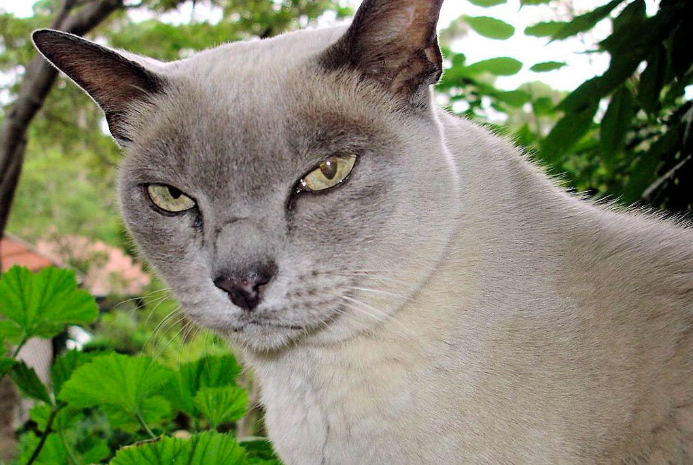
The Enchanting Burmese Cat: Affectionate, Playful, and Loyal
Enter the world of the Burmese cat, where elegance meets affection in a charming feline companion. Originating from the temples of Burma, these cats have captured the hearts of cat lovers worldwide with their striking appearance and loving nature. With their sleek coats, expressive eyes, and playful demeanor, Burmese cats are not just pets; they are cherished members of the family.
In this comprehensive guide, we delve into the captivating world of Burmese cats, exploring their history, physical characteristics, personality traits, and care requirements. Whether you’re a seasoned cat owner or considering adding a feline friend to your family, the Burmese cat’s unique blend of beauty, intelligence, and affection is sure to captivate you. Join us as we unravel the enchanting tale of the Burmese cat and discover why they are such beloved companions.
Burmese
Overview
The Burmese cat is a breed known for its striking appearance and affectionate nature. Originating from Burma (now Myanmar), these cats are renowned for their sleek, muscular bodies, expressive eyes, and silky coats. Burmese cats are often described as “people-oriented,” as they form strong bonds with their human companions and enjoy being part of the family. Their playful and curious nature makes them delightful companions for both children and adults alike.
History and Origins
The history of the Burmese cat can be traced back to ancient Burma, where they were considered sacred and kept by monks in temples. They were later brought to the West in the early 20th century and quickly gained popularity for their striking appearance and affectionate personality. The breed has since become a favorite among cat enthusiasts worldwide, known for its loving and loyal nature.
Physical Characteristics
- Coat and Colors: Burmese cats have short, sleek coats that lie close to the body. They come in a variety of colors, including sable, champagne, blue, and platinum. The coat is soft and silky to the touch, adding to the breed’s overall charm.
- Body Structure: Burmese cats are medium-sized with a muscular build. They have rounded heads, large, expressive eyes, and short, straight noses. Their compact bodies give them a sturdy appearance, and they move with grace and agility.
- Eyes and Ears: Their eyes are one of their most striking features, being large, expressive, and usually a deep, rich color that complements their coat. Their ears are medium-sized, slightly rounded at the tips, and set wide apart on the head.
Personality and Behavior
Burmese cats are known for their affectionate and sociable nature. They are often described as “dog-like” due to their tendency to follow their owners around the house and seek out human companionship. They are also highly intelligent and enjoy interactive play, making them great companions for families with children or other pets.
In addition to their affectionate nature, Burmese cats are also known for their vocalizations. They have a soft, sweet voice that they use to communicate with their owners, often engaging in “conversations” and expressing their needs and desires.

Health and Care
- Grooming: Burmese cats have short coats that require minimal grooming. Weekly brushing is usually sufficient to remove loose hair and keep their coat shiny. They also benefit from regular dental care to prevent oral health issues.
- Diet: A high-quality, balanced diet is essential for maintaining the health and vitality of Burmese cats. They should be fed a diet that is appropriate for their age, size, and activity level to ensure they receive the nutrients they need.
- Health Concerns: Burmese cats are generally healthy, but they can be prone to certain genetic conditions such as hypertrophic cardiomyopathy (HCM) and diabetes. Regular veterinary check-ups and a healthy diet can help manage these risks.
Training and Activities
Burmese cats are intelligent and can be trained to perform various tricks and commands. They enjoy interactive play and thrive on mental stimulation. Providing them with toys, puzzle feeders, and opportunities for play can help keep them entertained and prevent boredom.
Compatibility with Families and Other Pets
Burmese cats are known for their loving and social nature, making them great companions for families. They get along well with children and other pets, including dogs, as long as they are properly introduced. Their affectionate demeanor and playful nature make them a popular choice for households looking for a friendly and engaging pet.
Conclusion
The Burmese cat is a breed beloved for its affectionate nature, striking appearance, and playful personality. Whether you are looking for a loyal companion or a playful friend, the Burmese cat is sure to bring joy and warmth to your home. With their loving nature and sociable demeanor, Burmese cats make wonderful pets for families and individuals alike, enriching their lives with their presence and affection.
FAQs about Burmese Cats
What is the temperament of a Burmese cat like?
Burmese cats are known for their affectionate and social nature. They are often described as “dog-like” due to their loyalty and tendency to follow their owners around the house. They enjoy being involved in family activities and form strong bonds with their human companions.
Are Burmese cats good with children and other pets?
Yes, Burmese cats are generally good with children and other pets. They are playful and enjoy interactive play, making them great companions for families with children. They also get along well with other pets, including dogs, especially if they are introduced properly.
Do Burmese cats require a lot of grooming?
Burmese cats have short, sleek coats that require minimal grooming. Weekly brushing is usually sufficient to remove loose hair and keep their coat shiny. They also benefit from regular dental care to prevent oral health issues.
Are Burmese cats vocal?
Burmese cats are known for their soft, sweet voice, but they are not excessively vocal. They use their voice to communicate with their owners, often engaging in “conversations” and expressing their needs and desires.
What kind of environment is best for a Burmese cat?
Burmese cats thrive in environments where they have plenty of opportunities for play and interaction. They enjoy being part of the family and should have access to toys, scratching posts, and other enrichment activities. They also enjoy having access to outdoor enclosures or safe outdoor spaces where they can explore and indulge their natural instincts.
We appreciate you for taking the time to read this article!
Finally, we hope you found this article interesting? And what do you think about ”The Enchanting Burmese Cat: Affectionate, Playful, and Loyal!?”
Please feel free to share or inform your friends about this article and this site, thanks!
And let us know if you observe something that isn’t quite right.
-

 Pet Care2 years ago
Pet Care2 years agoThe Best Dog Collars For 2022
-

 Dogs2 years ago
Dogs2 years agoBichon Frise: The Happy, Playful, and Cuddly Companion
-

 Trending Pet Stories1 year ago
Trending Pet Stories1 year ago2023 ‘World’s Ugliest Dog’ Winner: Scooter’s Tale of Resilience
-

 Animals2 years ago
Animals2 years agoAre There Animals Having Down Syndrome?
-

 Pets2 years ago
Pets2 years agoThe Fascinating World Of The Red Chameleon
-

 Dogs2 years ago
Dogs2 years agoTop 10 Most Popular Dog Breeds According To AKC.
-

 Dogs2 years ago
Dogs2 years ago21 Dog Breeds That Resemble Bears Or Teddy Bears!
-

 Dogs2 years ago
Dogs2 years agoEskimo Dogs from Canada – What Are They? – Find Out!


